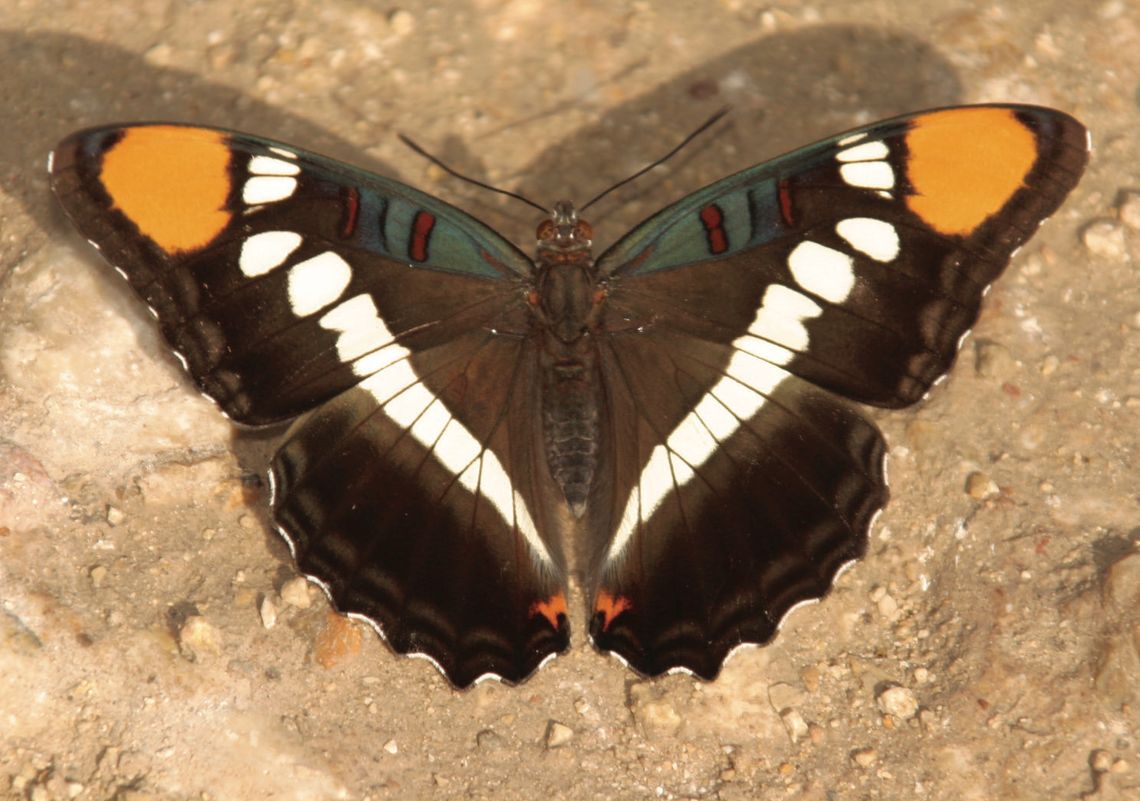There are a fairly large number of butterfly species that inhabit this great state, and a few of these are considered to be drab in coloration by many folks. However, there is a species that is found here that many naturalists consider to be one of the most beautifully marked species in the entire southwestern United States, the Arizona Sister.
The Arizona Sister (Adelpha eulalia) is one of the most common and yet unnoticed butterflies that inhabits Texas. It thrives along rocky hillsides and washes where it patrols for food and water sources. Oftentimes, it will fly much higher than other species of butterflies as it glides along, utilizing the infamous Texas wind to propel it. Therefore, it is generally not forced to flap its wings as it moves from “point A” to “point B”. Outside of Texas, it occurs from southern Utah and Colorado southward through California, Arizona, and New Mexico. From there it inhabits the appropriate habitat through the Sierra Madre Occidental in western Mexico.
The Arizona Sister is a colorfully marked species that many naturalists feel is one of the most beautiful butterflies in the southwest. Along the upper sides of the wings, the background coloration is a muted black, with two large and distinctive yellow or orange circles near the pinnacle of wings. Between these bright spots is a dash-dot trail of white that connects at the abdomen of the body. As if that were not enough color to adorn this animal, there is a series of red, black, and blue vertical bars that run along the upper edges of the wings. As this butterfly lands, the wings are clasped together to reveal powdery shades of brown, white, and blue. Adult butterflies reach a maximum wingspan of nearly three inches.
This species of butterfly has a particularly odd diet, feeding on flowers of honeydew plants, other fruit trees, and animal dung. It utilizes an appendage known as a proboscis to feed on these items. The proboscis is long and almost threadlike, and in times of non-use is curled up under the head of the butterfly.
Arizona Sisters, like other butterfly species, undergo a four-stage life cycle that can be described as nothing short of miraculous. In the beginning stage, their life begins as an egg, which hatches after a few short days into the next stage. Upon hatching, the larvae are known as caterpillars, and at this stage, the growth rate is highly accelerated. Caterpillars can eat twice their body weight in a single day, and as such, grow quickly. As they grow, they literally grow out of their skins, and they shed their outer layer of skin up to five times (known as molting) before they enter the next stage of their life cycle. After the caterpillar finds a spot in which it feels is secure, it will pupate as it forms a protective shell about it known as a chrysalis. Inside of this shell, the larvae change into the butterfly that it will soon become. After about a week, the adult will emerge from this shell with its wings intact, although they are crumpled into small balls on the sides of the body. The butterfly will then pump a clear fluid into the veins of their wings, causing them to expand much the same way a stick can reinforce a kite.
Upon reaching maturity, the Arizona Sister will immediately begin searching for food, water and a mate. After mating, the males will continue their search for other receptive females, while the females will begin to look for a site suitable to lay eggs so the life cycle process can begin again.
Look for this species near damp soil in rocky washes and arroyos, particularly on warm summer days. They are most commonly seen during their times of feeding and copulation, and these events generally transpire during the months of May through August.





















